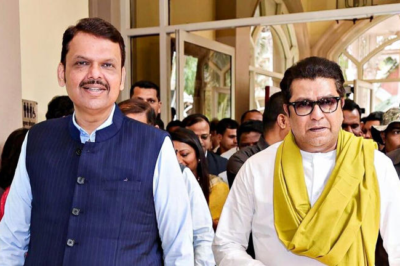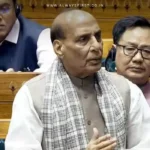
Raj Thackeray, leader of the Maharashtra Navnirman Sena (MNS), has become a focal point. His strategic decisions, shifting alliances, and rivalry with Uddhav Thackeray add layers to the state’s complex political scene. Here are five key points decoding the “Raj Thackeray enigma” as these crucial elections loom:
1. Strategic Absence and the MNS’s Reduced Candidate Count
Raj Thackeray’s MNS has fielded candidates in 137 constituencies, notably refraining from contesting 10 seats in Mumbai. This decision is fueling speculation that the MNS is making way for Mahayuti candidates, including those from the BJP and Eknath Shinde-led Shiv Sena (SHS), to have a stronger chance in certain areas. Although there is no formal alliance with the BJP, Thackeray has shown ideological alignment, suggesting an unofficial understanding that may influence voting patterns.
2. Crucial Stakes: Amit Thackeray’s Debut in Mahim
Raj’s son, Amit Thackeray, is contesting for the first time from the Mahim constituency, making this election personal for the MNS chief. BJP’s backing of Amit has strained relations within the Mahayuti alliance, as the Shinde Sena fields its own candidate, Sada Sarvanakar. Amit’s victory is pivotal for Raj, as it would help cement his legacy and potentially reinvigorate MNS’s declining influence, while showing the Thackeray family’s enduring appeal in Maharashtra politics.
3. A Fluctuating Relationship with BJP and PM Modi
Raj Thackeray’s political stance has fluctuated, especially in relation to the BJP. A vocal critic of PM Modi in 2019, Thackeray previously championed a “Modi-mukt Bharat” campaign, criticizing unmet promises and questioning Modi’s handling of national security issues. However, his recent alignment with BJP ahead of the elections — alongside meetings with Home Minister Amit Shah — indicates a potential shift, positioning Thackeray as a significant Marathi leader within the BJP’s broader Maharashtra strategy.
4. Marathi Manoos and the MNS Legacy
The “Marathi Manoos” narrative has been central to Raj Thackeray’s political identity. In the 2009 Assembly elections, the MNS won 13 seats by appealing to Marathi pride, although subsequent elections saw its influence wane. The 2024 elections are critical as the party’s regional identity is tested amid Maharashtra’s evolving political landscape. With the Shiv Sena now divided between Uddhav and Shinde factions, MNS hopes to attract Marathi-speaking voters who feel alienated by these factions.
5. Raj vs. Uddhav: A Power Struggle in the Marathi Political Space
Raj and his cousin Uddhav Thackeray’s rivalry remains intense, with both competing for a similar voter base of Marathi-speaking residents. While Uddhav represents the Shiv Sena’s traditional legacy, Raj appeals to those who feel the original Shiv Sena values have been diluted. As Uddhav aligns with Maha Vikas Aghadi (MVA), Raj’s implied cooperation with BJP and the Shinde faction of the Shiv Sena could undercut Uddhav’s voter base. A post-election alignment with the Mahayuti alliance is also possible, highlighting Raj’s potential role as a kingmaker.
The Maharashtra 2024 Assembly polls underscore a decisive moment for Raj Thackeray. With the possibility of a post-election realignment, the outcome could reshape Maharashtra’s political dynamics and redefine MNS’s place in the state’s future.








































Leave a Reply